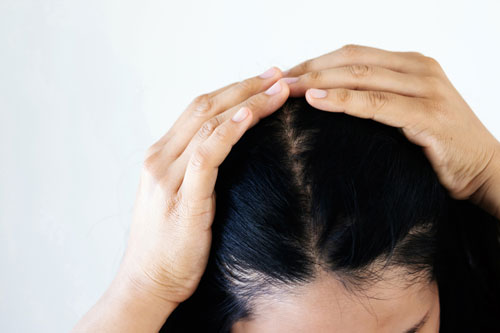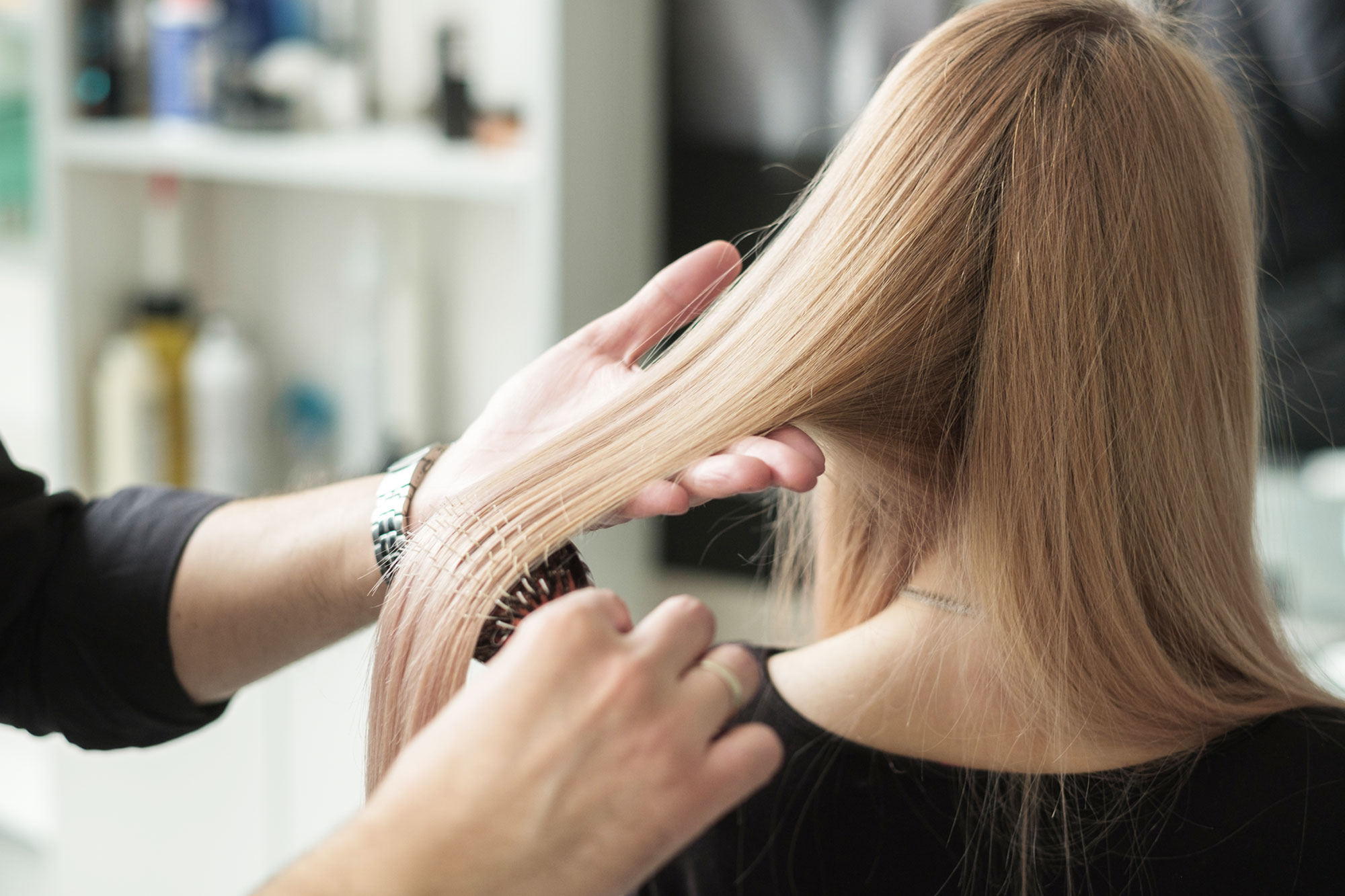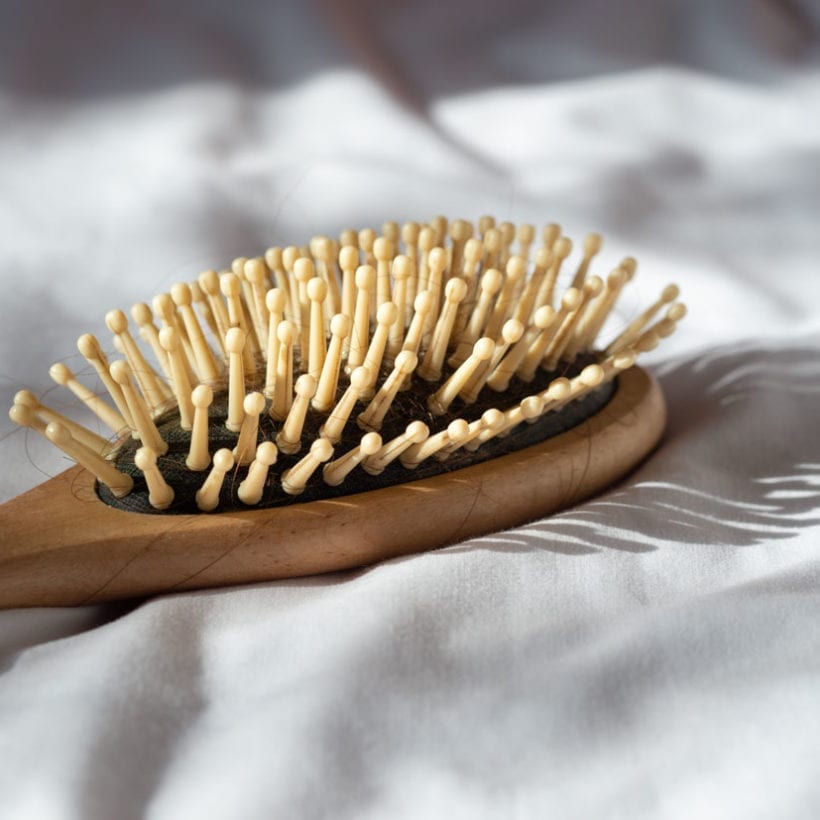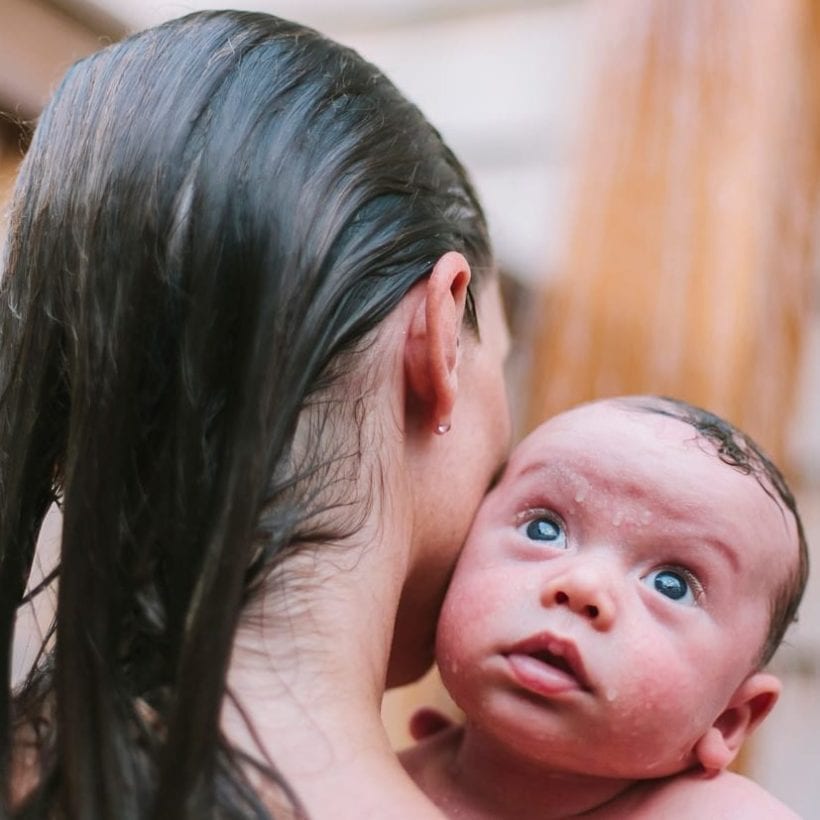I remember choking back tears at the hair salon a few years back, as the young intern combed fistful-size clumps of wet hair away from my scalp and remarked in her flat, unconcerned 18-year-old voice: “This is a lot of hair.” That was an understatement. I was four months postpartum and had an overactive thyroid — two potent contributors to hair loss. An astute hairdresser might have noted that it was an unusually large amount, something I might want to see a doctor about.
When is hair thinning a cause for alarm?
For starters, most healthy adults lose around 100 strands per day as part of the hair’s growth cycle. But most of us aren’t going to collect our strands (if we even could) and do a daily tally. So what does above-average shedding look like? “If one notices hair on the pillow or clumps of hair in the brush or comb, then that may be a sign of thinning or hair loss,” says Azza Halim, MD, a board-certified anesthesiologist and physician. Putting a hair-catcher in your shower can also help you evaluate how much you’re shedding. Hair loss can be gradual, including a slowly receding hairline, a widening part or a ponytail that gets thinner and thinner. Or it might be more sudden, with patches of hair falling out.
What about where it falls out of the scalp? Yes, that can determine what you might be dealing with. For example, if it’s even along the hairline or at the temples, that might be pattern baldness; if it’s round patches, that could be the autoimmune disease alopecia areata; whereas a circular loss of hair could signify ringworm; scaly patches may mean scalp psoriasis.
Meet the Experts
Azza Halim, MD, is a board-certified anesthesiologist and physician specializing in aesthetic medicine at her Newport Beach, CA, practice.
Sierra Kener is a hairstylist at Nine Zero One Salon in L.A. who has tended to the tresses of Nina Dobrev and Julianne Hough.
And then you need to take into account other symptoms you may be experiencing: Burning, stinging or intense itching? Swelling and sores? Weight loss? Increased heart rate? Once you note all the other things that don’t seem right with you, head to a health professional (a primary care physician or a dermatologist are good places to start). Tell him or her about the hair loss concerns as well as any other symptoms you’re experiencing, which will help guide them to what might be causing the hair loss. Don’t DIY. “Hair loss must be diagnosed to determine the cause, then treat it accordingly, as some types are reversible and others are not,” says Dr. Halim.

The causes of hair loss and hair thinning
Genetics is a big one. Hereditary hair loss is inevitable if it’s part of your genetic makeup, but it can be slowed down significantly, especially if you act sooner rather than later. And if you thought you could look at your mom’s dad to see if baldness ran in the family? It’s a myth, says hairstylist Sierra Kener. “The gene can actually be inherited equally from your mother’s and father’s sides.”
Another huge cause of hair loss is stress, which can be an emotionally traumatic event or even longer-term stress, which most of us felt during the COVID-19 pandemic. “Until the stressor is removed or resolved, then the stress actually pushes a large amount of hair into a telogen effluvium (resting phase),” explains Dr. Halim. “Once the stress is removed, then the hair regrowth can take about three to six months.”
Hormones also play a role in thinning. Imbalances or changes at menopause or after a pregnancy can all contribute. Once hormones are stable, hair loss usually minimizes. For postpartum women, Kener recommends asking “your doctor about postnatal vitamins.” And that’s another culprit — poor nutrition, including protein, vitamin and mineral deficiency, namely iron, B vitamins, vitamin D and zinc. Dr. Halim recommends multivitamins “that are specific for hair nutrition” and also omega-3s, which research has shown help decrease hair loss.
How you treat your hair can also affect thinning. That old adage of brushing 100 times per day? Unnecessary. But no brushing may also mean more shedding. “Curly hair tends to shed more, as most people with curly hair don’t shampoo or brush their hair as often,” explains Dr. Halim. And if you wear it in a tight, pulled-back style regularly (think: corn rows or slicked-back ponytails) or use extensions, you run the risk of breaking and permanently damaging the hair to the point that it doesn’t grow back. Heat is another culprit that can damage hair and lead to shedding, so use dryers and irons sparingly and if you do, apply a heat protectant before-hand, says Kener, who recommends In Common Magic Myst. “It’s a heat protectant with hair vitamins and has UV protectant, so it’s like a sunscreen for the hair.” And then there’s the coloring and relaxing treatments. “Overprocessing makes the hair shaft super brittle, which results in it falling out,” says Kener.
Other things that can cause hair loss include syphilis, chemotherapy, ringworm, medications, and more. The bottom line is that you should seek out a medical professional to help determine what is causing the hair loss. Once you know what you’re dealing with — if it’s just genetics playing their part, or if it’s something more serious like a thyroid condition — then you can start a treatment plan, if that’s right for you.
How to treat it
Treatment options for hair thinning depend on the cause, of course, and whether it’s temporary shedding or permanent hair loss. Treatments can include over-the-counter topical medications like Minoxidil (commonly known as Rogaine); in-office treatments including PRP therapy, red light therapy, exosome therapy, and hair restoration; using oils (tea tree, rosemary, or lavender) or a scalp serum to de-clog and nourish the hair and scalp (Sunday Riley Clean Rinse does an excellent job); using anti-thinning shampoos; regular scalp massage to stimulate growth, eating a nutrient-rich diet, and of course, minimizing stress if it’s stress-related.
And if it’s permanent and not reversible, you may choose to accept it and not fight it, especially as our acceptance of hair loss shifts. Dr. Halim points to studies that show how baldness is portrayed in movies, even from a young age. “In children’s movies, certain characteristics such as moles, wrinkles and baldness are distinguishing traits of villains — we are programmed early in life.” How do we change the stigma and negative perception of hair loss? “The best way to change this stigma is through education,” she says. And the more we support those who are embracing their hair loss and being real about it, the better. As Kener says: “We are in a generation that is more accepting towards body image and race. Hair loss should be right up there.”
We only recommend products we have independently researched, tested, and loved. If you purchase a product found through our links, Sunday Edit may earn an affiliate commission.







